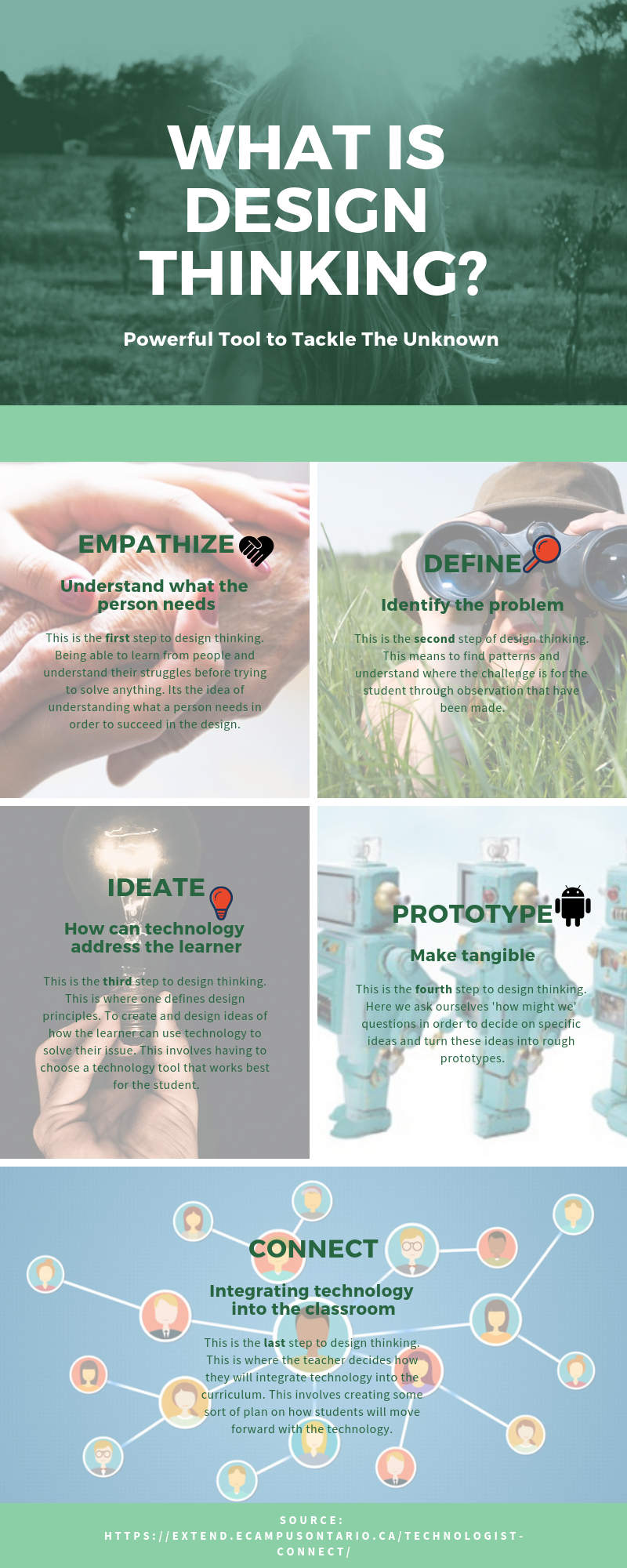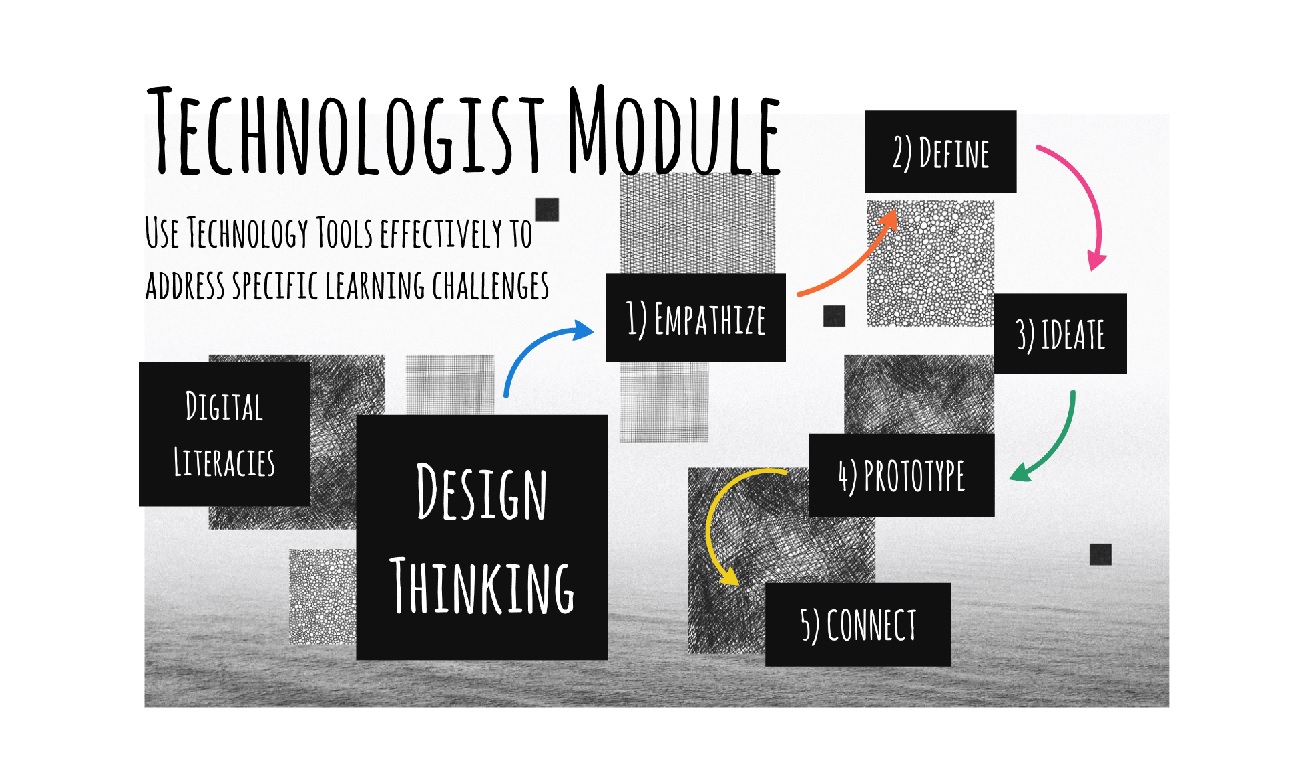For this multimedia reflection, we were able to explore the use of technology within a classroom as well as ways to make technological lessons easier to access for all learners. This was done through a module presented by eCampus Ontario with the help of Extend; they were able to clearly e xplain how easily this can be achieved in a classroom. This is very beneficial in the classroom and can aid in your development of technology pedagogy. A lot of teachers may lack knowledge in the technology department.
xplain how easily this can be achieved in a classroom. This is very beneficial in the classroom and can aid in your development of technology pedagogy. A lot of teachers may lack knowledge in the technology department.
With an easy to follow module like the one that was presented to us, it allows for teachers to gain a better understanding of how to incorporate technology into their classroom in the most effective way for their students. The module exhibits differ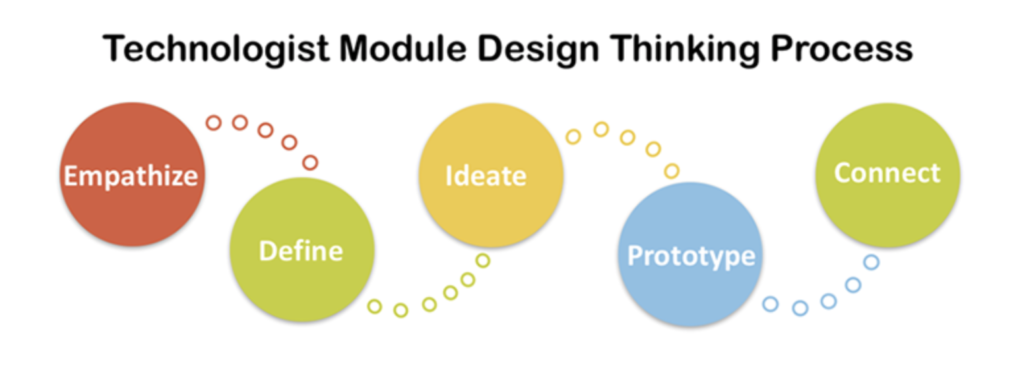 ent steps or pathways to achieve the
ent steps or pathways to achieve the  best
best
possible outcome for the students and to help teachers identify challenges they may come across with solutions to how to best solve them.
It is important to approach every lesson you prepare with openness; finding ways to share information on top of ways to allow your information to be accessible to a wide range of people. As a future educator, incorporating differentiation into my pedagogy is key. Once the target audience is known (finding out the students in your class on the first day of school for example) you are able to make specific adjustments based on their needs. Having particular needs should not penalize a student or make them any less.
 Differentiation looks at the variety of differences and allows for adaptability where it is necessary. Looking back on my first practicum experience, I know that this idea was something I failed to achieve. Incorporating digital media into my lessons was something I found hard to do but thinking of all of the different exceptionalities that my students may have had at the same time was very hard for me. I now can apply this module into my next practicum, ensuring that I make the different technologies I use accessible for all students as well as figure out any of the challenges I come across before presentation. I will most definitely refer back to this module in a couple of weeks. It is critical to have students reach goals in their own way that is best for them and I want to implement this idea in my next practicum.
Differentiation looks at the variety of differences and allows for adaptability where it is necessary. Looking back on my first practicum experience, I know that this idea was something I failed to achieve. Incorporating digital media into my lessons was something I found hard to do but thinking of all of the different exceptionalities that my students may have had at the same time was very hard for me. I now can apply this module into my next practicum, ensuring that I make the different technologies I use accessible for all students as well as figure out any of the challenges I come across before presentation. I will most definitely refer back to this module in a couple of weeks. It is critical to have students reach goals in their own way that is best for them and I want to implement this idea in my next practicum.
When it comes to technology, I personally felt like I would have considered myself “technologically savvy”. However, after going through the module, I realized I am just savvy in the social media field. Th is is not a beneficial tool for me in the classroom or to my pedagogy. There is a lot more to explore in the technology world, and I feel as though that not only this model, but this class in this entirety has improved my knowledge on this topic. I will utilize everything I have learned to become a better teacher, but also to better my students and their needs in regards to technology.
is is not a beneficial tool for me in the classroom or to my pedagogy. There is a lot more to explore in the technology world, and I feel as though that not only this model, but this class in this entirety has improved my knowledge on this topic. I will utilize everything I have learned to become a better teacher, but also to better my students and their needs in regards to technology.
The platform that I have chosen for this multimedia reflection was Canva. (Click here for a better visual of it!) I t was my first time using it, but I had heard many good things. I however found it not user friendly. This could have been due to my lack of experience with the website; identifying a learning curve that I was unable to meet. I should have explored the website more before jumping right into the multimedia. As well, I found that the lack of colour schemes was not beneficial. Most of the graphics I had searched for in the side tool bar were ones that you needed to pay for. For a free website, having users pay $1 for a photo/graphic is absurd to me. I found that adjusting certain objects and text boxes was difficult as it changed the font size itself as well as the positioning of certain graphics. As well, italicizing font want not an option. For my second multimedia I used Piktochart, which compared to Canva, I found to be more accessible to my needs.
t was my first time using it, but I had heard many good things. I however found it not user friendly. This could have been due to my lack of experience with the website; identifying a learning curve that I was unable to meet. I should have explored the website more before jumping right into the multimedia. As well, I found that the lack of colour schemes was not beneficial. Most of the graphics I had searched for in the side tool bar were ones that you needed to pay for. For a free website, having users pay $1 for a photo/graphic is absurd to me. I found that adjusting certain objects and text boxes was difficult as it changed the font size itself as well as the positioning of certain graphics. As well, italicizing font want not an option. For my second multimedia I used Piktochart, which compared to Canva, I found to be more accessible to my needs.
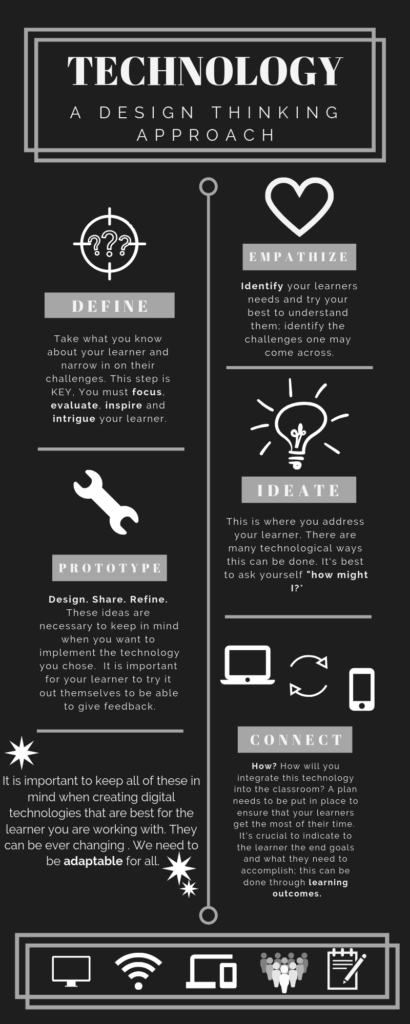

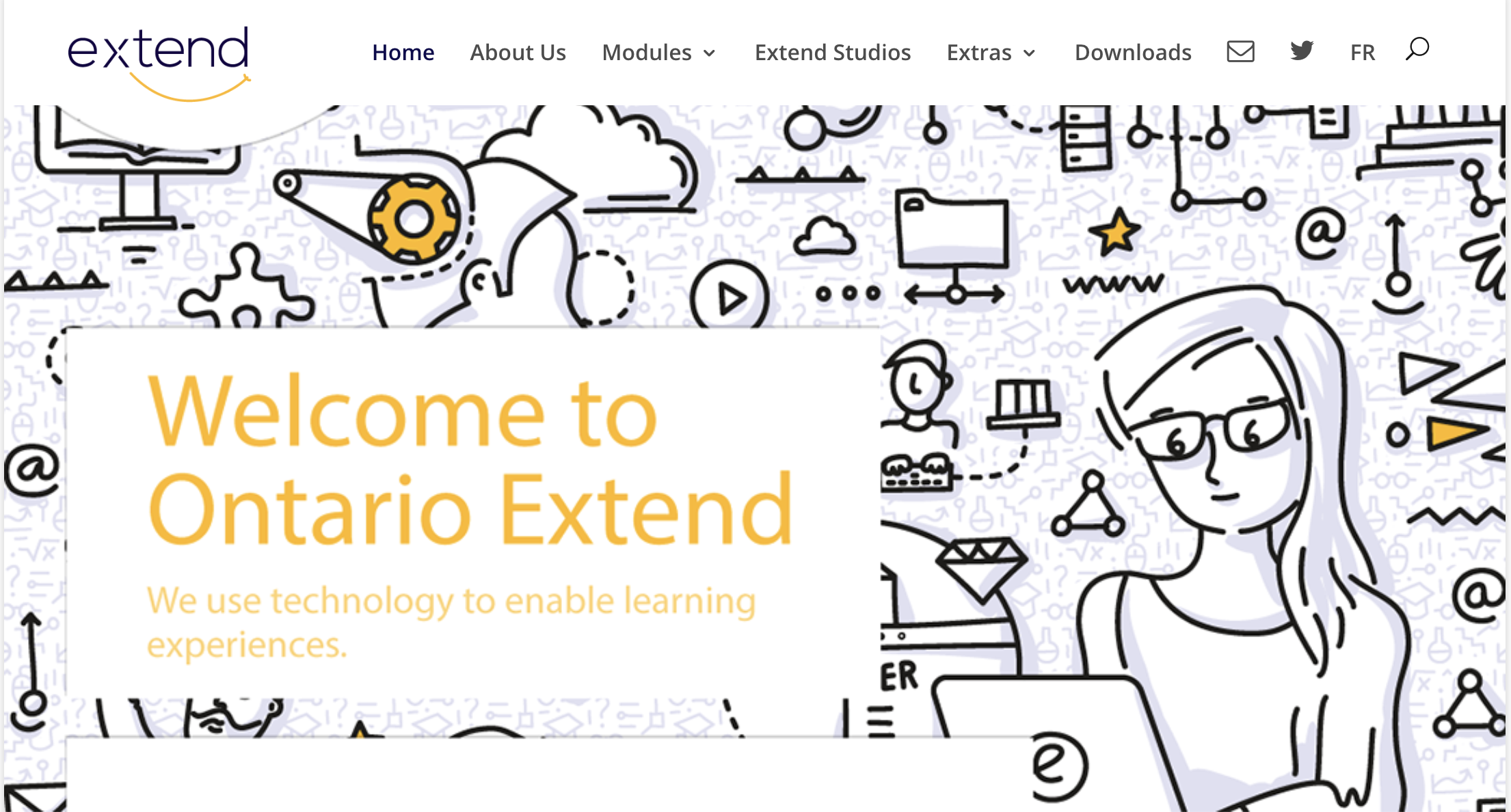
 out digital literacy and design thinking. For me, hyperlinks are distracting and I tend to not interact with them very much. I like to have a specific focus when learning about a new topic, and clicking on a hyperlink makes me feel like I’m going on a digital tangent. I don’t want to lose my place in the original text I’m reading, so I don’t usually click on hyperlinks that will lead me to a whole other world of information. Furthermore, I often found myself ignoring the “extend activities”, because they felt like extra information that was not necessary for me to understand the module.
out digital literacy and design thinking. For me, hyperlinks are distracting and I tend to not interact with them very much. I like to have a specific focus when learning about a new topic, and clicking on a hyperlink makes me feel like I’m going on a digital tangent. I don’t want to lose my place in the original text I’m reading, so I don’t usually click on hyperlinks that will lead me to a whole other world of information. Furthermore, I often found myself ignoring the “extend activities”, because they felt like extra information that was not necessary for me to understand the module. My favourite part of the module was the video
My favourite part of the module was the video 

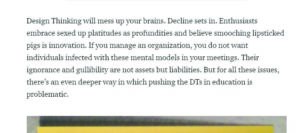
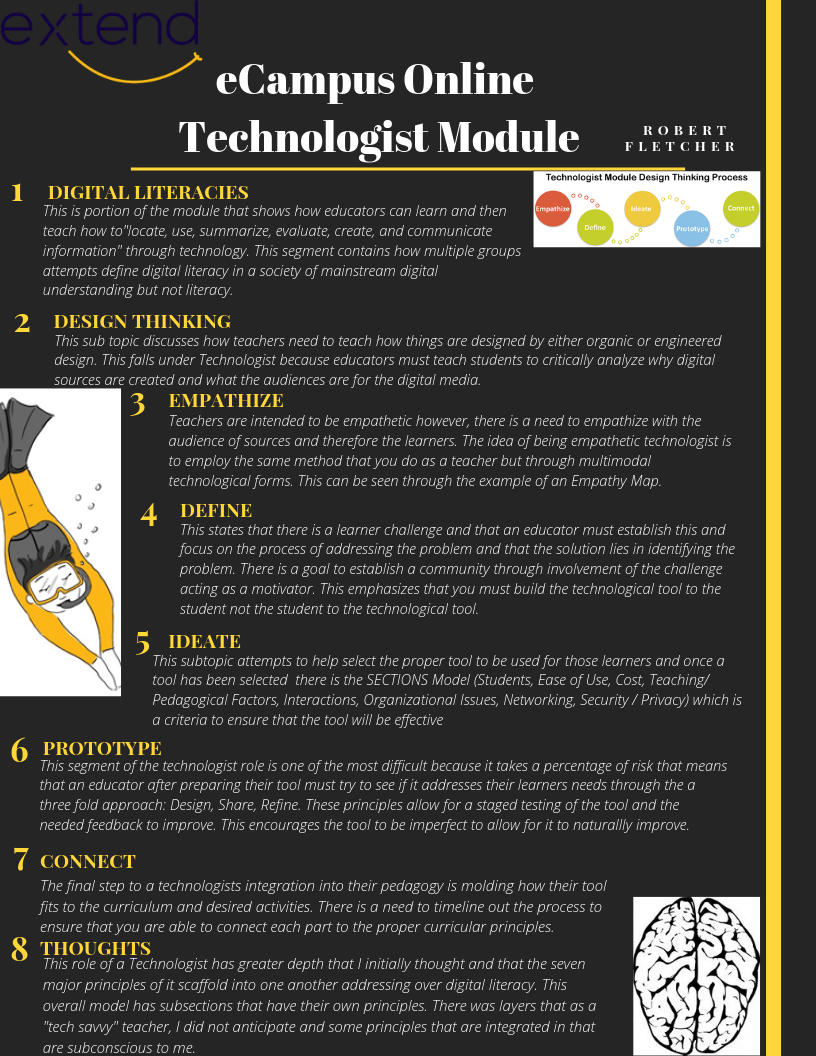 Going through the role of the technologist on the eCampus modules proved to be an eye opening experience with it showing me how much that is taken for granted as an educator who was raised into a technology the skills that I employ naturally, but a majority of teachers would not. There is a natural effort throughout our lesson planning to integrate technology into the classroom so that it is relevant to the audience, therefore aligning it with curriculum. However, the one concept that I found that I commonly skip or overlook is the prototype stage, where I learned that I tend to just risk it but not form a controlled risk or have a segmented release of the tool. This made me self reflective of the tools that I do use in my lessons and it made me realize that there is many different tools that I use but they fit the same mold . That mold is traditional education through quizzes or testing of knowledge, such as kahoot or mentimeter. This made me critically reflect on the fact that I may use technology in the classroom but it might not be fully addressing the challenges of the learners which is the end goal for integrating technology. I understand that there may be a use of technology in the classroom but it may not be effective. The role of the technologist has so many steps and subtle nuances to ensure that when you as an educator employ differentiated instruction that it not only understands the class problems but properly addresses them. Furthermore, we always learn about student centered learning as a core concept to most teacher pedagogues, however I learned that you need to select the tool for the student not the technological tool that the teacher enjoys. The overall module for technologist was effective because it mirrored what it sought to enforce by providing multimodal education with it having facets that appealed to multiple different types of intelligence by utilizing textual, visual, auditory, and linguistic elements to reach the audience. this is effective while at the end it models further strong educational skills by emphasizing the value of feedback to improve its modules, while recognizing the fact the facing constructive criticism is one of the hardest parts of integrating a new tool into the classroom. This module had a far greater depth than I had anticipated which is the reasoning for why I chose to do an Infographic because there was far too much information to express with a more visually driven platform such as Powtoon.
Going through the role of the technologist on the eCampus modules proved to be an eye opening experience with it showing me how much that is taken for granted as an educator who was raised into a technology the skills that I employ naturally, but a majority of teachers would not. There is a natural effort throughout our lesson planning to integrate technology into the classroom so that it is relevant to the audience, therefore aligning it with curriculum. However, the one concept that I found that I commonly skip or overlook is the prototype stage, where I learned that I tend to just risk it but not form a controlled risk or have a segmented release of the tool. This made me self reflective of the tools that I do use in my lessons and it made me realize that there is many different tools that I use but they fit the same mold . That mold is traditional education through quizzes or testing of knowledge, such as kahoot or mentimeter. This made me critically reflect on the fact that I may use technology in the classroom but it might not be fully addressing the challenges of the learners which is the end goal for integrating technology. I understand that there may be a use of technology in the classroom but it may not be effective. The role of the technologist has so many steps and subtle nuances to ensure that when you as an educator employ differentiated instruction that it not only understands the class problems but properly addresses them. Furthermore, we always learn about student centered learning as a core concept to most teacher pedagogues, however I learned that you need to select the tool for the student not the technological tool that the teacher enjoys. The overall module for technologist was effective because it mirrored what it sought to enforce by providing multimodal education with it having facets that appealed to multiple different types of intelligence by utilizing textual, visual, auditory, and linguistic elements to reach the audience. this is effective while at the end it models further strong educational skills by emphasizing the value of feedback to improve its modules, while recognizing the fact the facing constructive criticism is one of the hardest parts of integrating a new tool into the classroom. This module had a far greater depth than I had anticipated which is the reasoning for why I chose to do an Infographic because there was far too much information to express with a more visually driven platform such as Powtoon.

